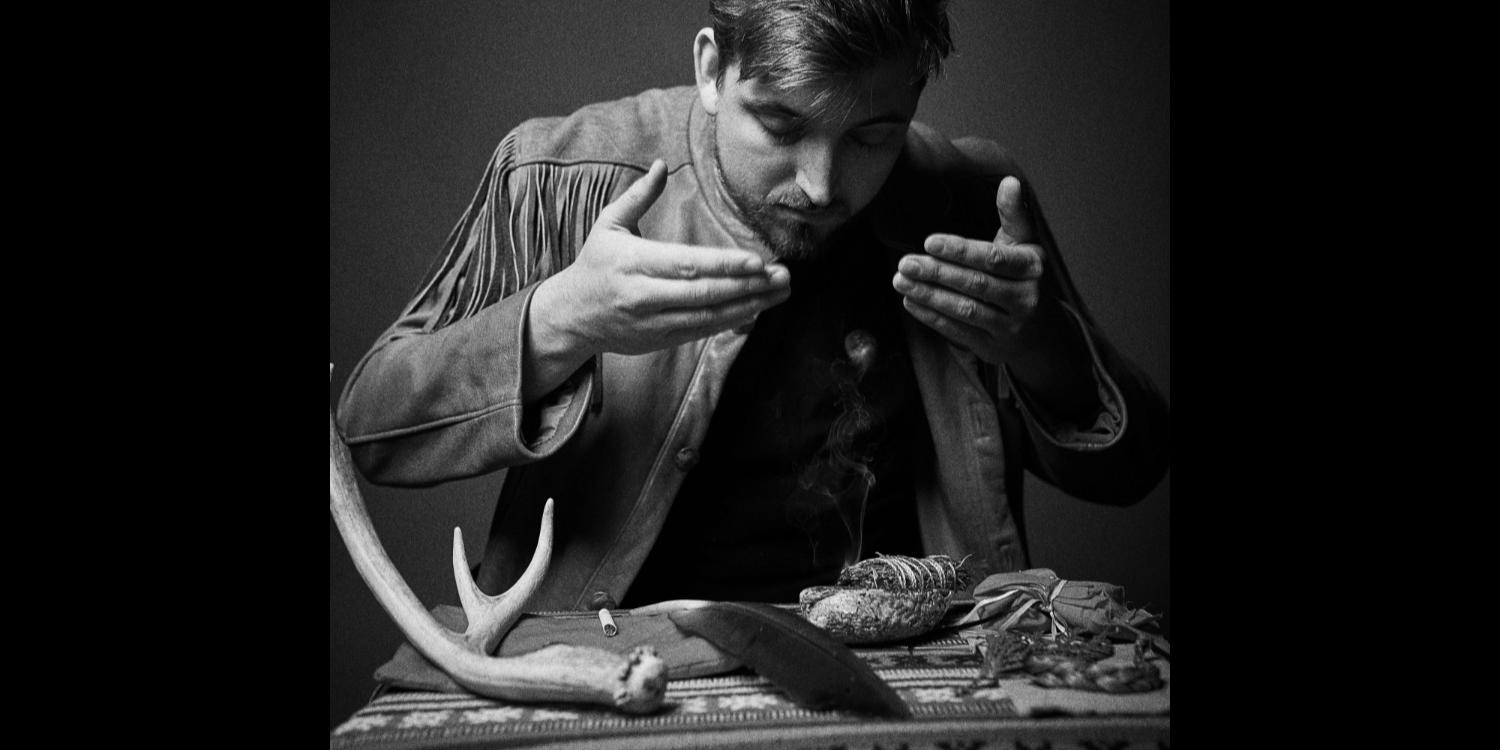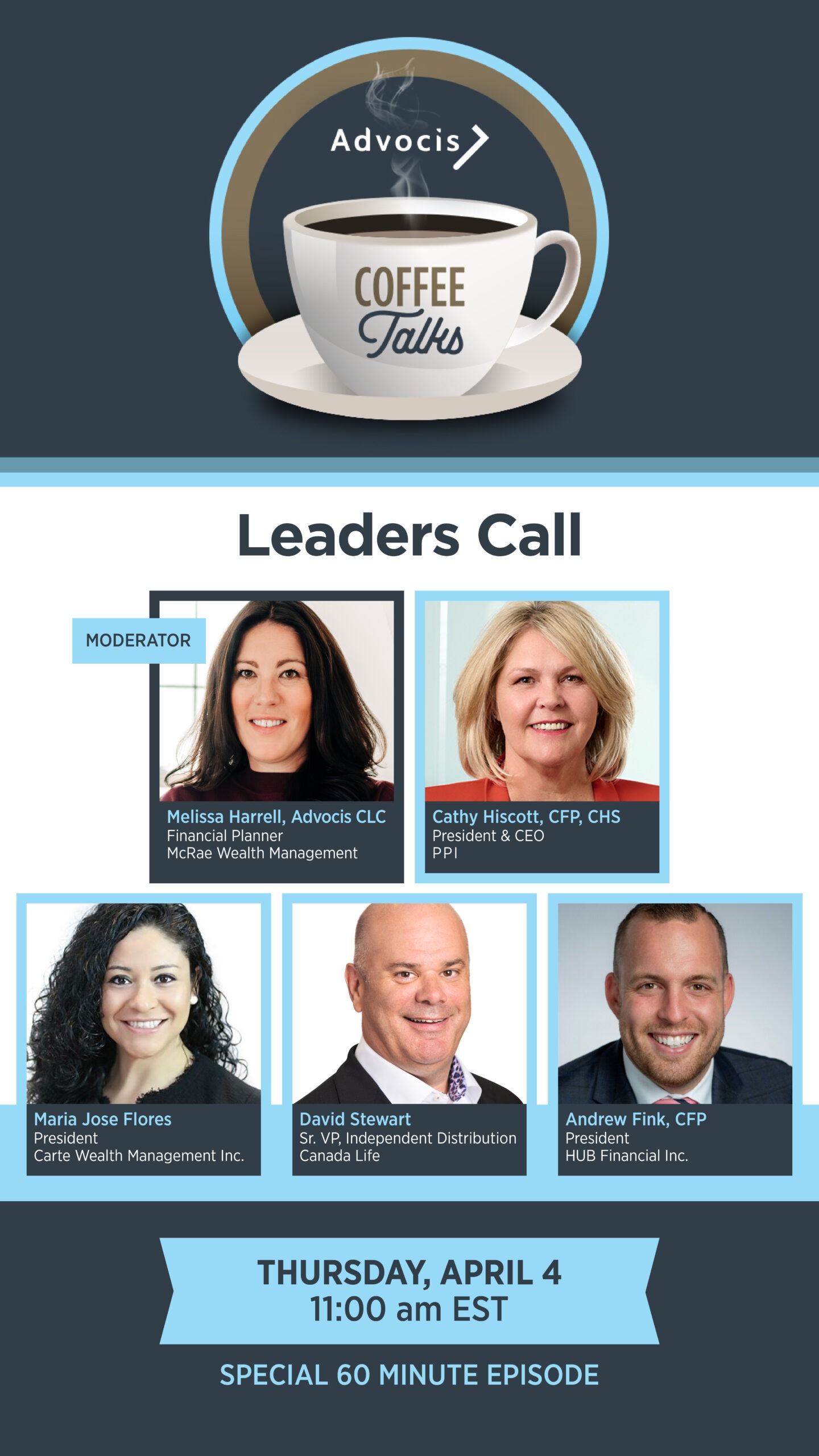By Mike Carlson
As an Indigenous person who is also a QAFP, I feel alone. I believe that I am one of only a handful of Advocis members who self-identifies as Indigenous, and am further isolated because there is no demographic or race data on members, and no spaces I can go to meet other Indigenous planners like me. On this 21st of June, the summer solstice and National Indigenous Peoples Day – a day that is very important to me culturally – I feel the weight of that isolation the most.
But why does it seem like there are so few Financial Planners (and, for that matter, so few financial planning clients) who self-identify as Indigenous? Is it because there aren’t that many Indigenous people in Canada? Nope – 5% of the Canadian population is Indigenous, so on average, one out of twenty planners or clients should be an Indigenous person. Is it because Indigenous people live on reserves far away from where financial planning business happens? Nope – more than half of all Indigenous peoples live in urban cities like Toronto. Indigenous people are all around you, and you walk by them on the street all the time, but they are seemingly absent as planners and clients. So what gives?
I offer this article to Advocis members, financial planners and anyone working in finance who wants to take 15 minutes on this special day to reflect on something that is likely quite foreign to most of you: the horrific relationship between Indigenous peoples and money – and what you can do about it as an industry professional.
I am Indigenous – yet I certainly do not speak for all Indigenous people
Before we start, I need to clarify who I am. My life experiences have shaped the stories I can tell, and therefore the stories and opinions I give here are mine and mine alone. Other Indigenous people may agree or disagree with what I say based on their own experiences. It would be great if we could hear as many Indigenous voices as possible. But I worry that, as I may be a lone Indigenous voice inside the financial planning community, some may take my voice as the authority for all Indigenous peoples. I am not ‘the Indigenous voice’, and no one individual speaks for the Indigenous community.
To illustrate with an example, I’d like to look at my experience over the past weeks versus the experiences of one Indigenous youth I mentor. I have ‘white’ skin and this Indigenous youth has brown skin. This youth was beaten and mugged on the streets of Toronto just last week for ‘looking Indigenous’, and he is currently recovering from a concussion. He is angry right now, and furious that people targeted him and stole his wallet and phone. I, on the other hand, have never been beaten for the way I look and consequently do not know the anger he feels. My lack of anger allows me to write calmly to you now, whereas that youth wouldn’t have the patience or the energy to talk to you. As a result, he will not share his stories for now, and you may never know what it is like to be him, or be able to compare his opinions and my own. What I am offering here is my perspective, based solely on my specific experiences as an Indigenous person.
With that in mind, here are a few important things to know about my identity as an Indigenous person so you can contextualize my writing for yourself:
- I identify as ‘mixed-Indigenous’ because my ancestors come from many places.
- My great grandmother was a band member of the Osoyoos Indian Band in the south Okanagan in BC. She lost her ‘Indian status’ because she moved away/married a non-Indigenous man.
- I have worked as an educator in Toronto’s urban Indigenous community since 2014 and as a financial planner since 2019, with 50% of my clients identifying as Indigenous.
- My Indigenous cultural context and knowledge comes as teachings from my dad’s side of the family (Interior Salish and Métis) in addition to the First Nations House of Learning at UBC and my work with the predominantly Anishinaabe urban Indigenous community of Toronto.
- I’m a tall, white skinned, able-bodied, hetero, cis-male.
- I was raised upper/middle class and went to private school growing up and to UBC/U of T for my undergrad and then graduate degree.
Now that you know my background and where I’m coming from, I need to further clarify what we mean when we say Indigenous peoples.
Indigenous peoples, found in this place that some of us call Canada, are wildly diverse and consist of the First Nations, Métis and Inuit (FNMI for short). I won’t get into specifics about these groups, and further sub-groups, but I encourage you to read more from the additional readings list found at the bottom of this article. For now, consider ‘Indigenous peoples’ to be diverse in the same way that you might broadly categorize ‘Africans’, with white South Africans, Egyptians and rural Nigerians somehow all lumped into one category called ‘Africans’. There is clearly no true ‘African person’ and similarly there is no true ‘Indigenous person’. But for simplicity’s sake, I will refer to Indigenous peoples as one entity. Now let’s talk about the relationship between Indigenous people and money, and how it came to be horrific.
Truth
The truth is that Indigenous peoples experience a completely different Canada than non-Indigenous Canadians, especially around their personal finances and their relationship to money. This fact is not an isolated phenomenon. There are very tangible and understandable reasons for the entirely different economic reality Indigenous peoples face.
On average, Indigenous peoples make two-thirds the annual income that non-Indigenous Canadians make, have twice the unemployment, and die 10-15 years earlier. To drive that last point home: if you are born Indigenous, you can expect to die ten years earlier than your non-Indigenous friends. So is there any wonder why Indigenous peoples have more on their minds than planning for retirement, filing taxes on time or balancing their portfolios? I haven’t even mentioned increased youth suicide rates, traumas from having children being taken away to residential schools, the fact that Indigenous youth make up 50% of kids in foster care but only 5% of the overall population… I can go on. So let’s take a look at some specific historical examples that have led to where we are today.
Disenfranchisement – exclusion from the economy
My grandfather (on my Norwegian side) fought in the Second World War in the Canadian Navy. He was on a battleship in the Atlantic for most of the war, and when he returned, was given the option to buy subsidized farmland by the Federal Government to thank him for his service. This farmland in the south Okanagan (BC) is where he raised my dad and the rest of his family. He eventually sold it, making money to purchase a different property. Conversely, Indigenous people who fought in WW2 were not given the option to purchase any subsidized land as a thanks for their service. Had both my paternal grandparents been Indigenous, my family’s generational wealth would be substantially lower as a result of missing out on this gift of subsidized land. There are 3000+ First Nations soldiers who fought and risked their lives for this country and their families received nothing for it, while the white soldiers like my grandfather were given farmland subsidies when they came home.
Also, between 1830 and 1960, depending on where you lived, if you were a ‘real Indigenous person’ according to the Government (aka a status Indian in legislation), you were not allowed to work for money. This policy, unfathomable by today’s standards, meant that the only way you could work as a professional or join the army to make money was to renounce being Indigenous and move away from your community – giving up your status as an Indigenous person. For over one hundred years, the Canadian Government made it illegal for many Indigenous people to make money by working a good job as a member of Canadian society.
Oppression – exploitation and destruction of wealth
Indigenous people have been harmed by those with money and power for centuries – and sometimes with sickening cruelty. In the 1950’s, the Inuit Dog Slaughter is one such example. Here, the RCMP shot and killed an estimated 20,000 Inuit dogs. How the RCMP justified this act of brutality remains unclear. These dogs were not only members of the community but also integrally linked to all facets of Inuit economic autonomy, serving many functions including hunting, travel, trade, and security. Effectively this dog slaughter removed the economic backbone of the community, destroying intergenerational wealth and their way of life.
Looking farther back in time, in the 1700’s and 1800’s European settlers were obsessed with beaver pelts, which led to a boom in trade for Indigenous people from Quebec to the North West Territories. Many Indigenous people found their old way of life changing and could trade beaver pelts in this emerging economy to look after their families. Beaver pelts slowly lost favour, however, and there was a surplus of pelts, so Indigenous people who had abandoned traditional ways of life to participate in this new economy were left with untradeable beaver pelts and no other ways to join the economy. This absurd and shortsighted economic cycle based on resource extraction continues to this day in the form of mining, pipelines and land use around Indigenous communities.
As if chronic exploitation and destruction of Indigenous wealth wasn’t enough, the Canadian government has actively given money to local Indigenous leaders since the 1850’s under a chief and council system – a system that no Indigenous community asked for or ever needed – to promote cooperation between Canada and local Nations. These paid Indigenous officials had economic influence in their communities, and frequently chose to financially support their like-minded friends and exclude anyone who wasn’t compliant. These appointed and paid chiefs commonly acted against the best interests of their people out of a desire for self preservation. The Canadian Government used money to fracture Indigenous communities and empower tribal leaders that favoured the Government’s agenda.
Dislocation – forced relocation and the theft of land
The most obvious truth to consider is that Indigenous people occupied 100% of Canada 500 years ago. As such, all of Canada was Indigenous land, and to say otherwise is either: racist (aka Indigenous people weren’t real people who could own land), idiotic (aka land ownership only started on a certain day because that was when a certain set of my ancestors moved here) or immoral (aka we beat them up, took their land and now it’s ours, and they aren’t allowed to beat us up and take it back). There was no one else in Canada 500 years ago – who else’s land could it have been?
Now let’s consider the economic benefits of the land: the natural resources, food, clean water and more that made up the vast majority of Indigenous people’s ‘wealth’ at the time (from the perspective of today’s economic lens). Over the last 500 years, Indigenous people were at first forced to share and then entirely give up their land until they now have ‘reserved’ sections of land totaling 0.36% of the total land mass of Canada. Given that the total wealth of Canada currently is around nine trillion dollars, and some percentage of that is the value of the land and its resources, you could easily argue that Indigenous people have had trillions of dollars of wealth stolen from them. It’s like your neighbour moving into your house and then a few weeks later threatening you with physical violence to make you leave – you’ve just been forced out of the largest asset you own and your health, wealth and economic opportunities will never be the same. Every time a piece of real estate is bought and sold in Canada, it is a slap in the face to the Indigenous people who originally occupied and owned the land.
Another poorly understood truth is that many of the Indigenous communities that currently exist are not where they are ‘supposed to be’. In fact, many Indigenous communities have been forcibly moved to their current locations over the last couple hundred years. Do you ever wonder why Indigenous communities keep flooding in Manitoba every year? Why would Indigenous people choose to settle in an area that’s a yearly flood plain? It’s because they didn’t choose it – they were forced there by the Canadian Government a long time ago. Do you wonder why Manitoulin Island in Ontario has such a high concentration of reserves? Did Indigenous people love living on an island with poor soil quality and few natural resources? Nope – there was a Government plan to move all Indigenous people in Ontario onto Manitoulin Island, which was abandoned after a few decades because it was ‘too hard to move them all’.
The Royal Commission on Indigenous Peoples is an extensive report that details many of these forced relocations (link at the bottom of this article). The forced relocation of Indigenous peoples removed them from their livelihoods and support networks, forcing them to abandon their previous ways of life that were tied to the land. Imagine someone forced you to quit your job and move to an island where you didn’t know anyone – how would you do in that scenario? Would you even be able to provide for your family?
The Not-so-Simple Truth
Indigenous peoples currently have a relationship with money (and the financial industry as a whole) that is the logical conclusion of hundreds of years of systemic financial traumas. For generations, they have been excluded from the economy, had their natural wealth stolen and destroyed, and been actively harmed and controlled by wealthy non-Indigenous people. Why would they trust this thing called money when it – and the non-Indigenous people like you who have wielded it – have abused, coerced, fractured and undermined everything that Indigenous peoples hold dearest?
I hope you can now begin to see the truth about why there may be so few planners and clients in our industry. So what now?
Reconciliation
If you’ve read this far, I applaud you. Most people give up after getting even partially into the truth of this matter. The truth is hard, especially when you might be feeling anger or sadness or guilt. Alternatively, maybe you feel disconnected from this because it’s easier, or you think it’s not relevant to you. Whatever you feel right now, continue to feel it, because feeling through this is the only way to get all the way through it. Now, let’s talk about what we can do in our industry to move forward.
The First Thing You Can Do – Give a Damn about Indigenous Peoples
Frankly, the financial industry and its professionals on the whole don’t give a shit about Indigenous peoples unless there is a blockade en route to their cottages or when a mining company they’re invested in is being held up by ‘tiresome’ Indigenous community consultations.
This needs to change.
Until financial industry professionals en masse have empathy – a deep, can’t-sleep-at-night-because-I’m-worried-about-my-family-member kind of empathy – for Indigenous peoples, we aren’t going to get any kind of systemic change. Without empathy, Indigenous peoples will continue to be “those unrelatable people from the news on far-off reserves that seem to really have it rough because of history or something, I can’t really remember, but I’m tired, so what’s on Netflix…”
Empathy starts a chain reaction inside the human brain where your own well-being is tied to the well-being of others. And I guarantee you that the economic situation faced by Indigenous peoples would change overnight if the entire financial industry could feel what it’s like to be Indigenous for a single day. For example, imagine if:
- A CFP, talking about risk in a portfolio, could suddenly know the real risk that their kids might be taken away because their household poverty looks like child abuse to a social worker.
- A CLU selling life insurance could suddenly know that if they live to be 60 years old, they’ll be one of the lucky ones – so maybe they should live in the moment, enjoy life while it lasts and have fun spending their money now.
- A CPA filing a T1 could suddenly realize that the capital gains on the T1 came from the sale of property that was stolen from their ancestors and that this client had no business making money off of assets rightfully owned by the CPA’s family.
In parallel to ‘giving a damn’ about Indigenous peoples, the financial industry also needs to consider its own identity with regards to who can access financial services – aka its clientele. It’s no secret that financial planners want high value clients because they can charge higher fees and have traditionally received more compensation from clients with more assets. So when financial institutions publicly promote that financial planning is accessible to all, it’s an unrealistic claim. In reality, these institutions should probably advertise that “Financial Planning should be a service offered to everyone – but good luck finding a planner that will work with you for less than $2,000 a year.”
When financial planners charge high fees to help their clients – and Indigenous people can’t pay those fees because they have less money, because of the historic truths I talked about earlier – some people might say that’s economics. I say it’s our industry continuing the cycle of not giving a damn about Indigenous peoples.
Finally, I’ve noticed that a lot of people in finance say they don’t know an Indigenous person, and I think that likely contributes to the lack of empathy for and dehumanization of Indigenous peoples. Well, now you don’t get to say that, because my name is Mike and I’m an Indigenous financial planner working to improve the relationship that Indigenous people have with money. I hope that you will give a damn about me and the well-being of all Indigenous peoples.
The Second Thing You Can Do – Implement Best Practices from Other Industries
I’m a big fan of not reinventing the wheel when it comes to implementing complex processes in my life, and I bet the financial industry as a whole shares the same values. So, if valuing Indigenous sovereignty is a priority for the financial industry and not just smoke and mirrors, then why can’t we look to other sectors that have been working on this problem for decades? Why not borrow the easiest to implement, most successful practices that have been proven to work elsewhere? Here, I offer some of the easy wins I’ve seen from the education and non-profit sectors that all financial planners can ask their leadership to implement:
1. Collect race/ethnicity data for industry professionals.
This is easy to ask and easy to answer for planners. We can’t have a conversation about who is Indigenous and who isn’t without this data.
2. Set clear targets and create an action plan to achieve a specific proportion of Indigenous planners by a specific date.
Without targets there is nothing to shoot for or measure success by, and without an action plan there is no way to get there.
3. Create a working group for Indigenous planners and support it with sufficient resources.
Give Indigenous planners their own space to program and run as they wish.
4. Respect and implement recommended changes from the Indigenous working group.
Don’t waste everyone’s time if you aren’t going to actually implement the recommendations from the Indigenous working group.
In addition to these four easy wins, there are further easy-to-implement, practical changes to financial institution policies that would encourage more Indigenous people to become financial planners and create access for more Indigneous clients:
- Continuing Education Credits (CE) must include more options (and more mandatory CE credits) for volunteering in communities that are underserved by financial planners or mentoring planners that are underrepresented
- Extending qualifying work experience for certification to include community-based outreach/educational activities in underserved communities
- Encouraging underrepresented planners to create professional development and CE through financial subsidies
- Expanding the fee structures for memberships and renewals to include more affordable costing tiers for underrepresented members and members serving underrepresented communities
The Third Thing You Can Do – Speak Up About the Need for Change
The financial sector as a whole is absent from the public dialogue about the health, economic empowerment and well-being of Indigenous peoples (see the section above on giving a damn). But this slowly changes with every financial planner that posts what they learn about Indigenous peoples on social media, or starts a casual conversation about the lack of Indigenous representation in their workplace, or emails their elected representatives about the harsh and completely unjustifiable economic realities for Indigenous peoples.
You have a voice and more power than you realize, so please tell the people in power around you that this can change and that it needs to change right now. Tell them to listen to Indigenous peoples and implement their recommended changes. Ask them to remember the truth that settler Canadians have been systematically undermining Indigenous peoples’ economic success for 500 years and that it needs to stop now. You can help everyone around you give a damn about the well-being of Indigenous peoples and turn your voice into a chorus of voices demanding change.
And, if you or anyone you know is an Indigenous Financial Planner, I’d love to get in touch with them so that maybe I can feel a little bit less alone on National Indigenous Peoples Day – and help them feel a little less alone, too.
In friendship and finance,
Mike Carlson
 |
Mike Carlson is a mixed-Indigenous QAFP in Toronto who runs his own financial planning practice to support people in developing healthier relationships with money. He is an educator, a community builder and an Indigenous rights advocate who is always trying to improve the lives of the people around him. Get to know Mike more at his YouTube channel found at www.mikecarlson.ca or on LinkedIn. |
Additional Reading/Watching List:
For the stats lovers, StatsCan’s 2020 report on Indigenous peoples: https://www.sac-isc.gc.ca/eng/1602010609492/1602010631711
For the book lovers, Chelsea Vowel’s Indigenous Writes: https://goodmindsebooks.com/products/a-guide-to-first-nations-metis-and-inuit-issues-in-canada
For the TV and documentary lovers, TVO’s six episode series called First Contact: https://www.tvo.org/programs/first-contact
For the big picture thinkers who love reading loads of research, the Royal Commission on Aboriginal Peoples is an extensive report highlighting so much more – this is just the summary: https://www.rcaanc-cirnac.gc.ca/eng/1100100014597/1572547985018
Note: The original version of this article contained a paragraph stating that the author’s grandfather had received a gift of land directly from the Federal Government. This has been corrected and revised to state that it was an option provided by the Federal Government to purchase subsidized land.








